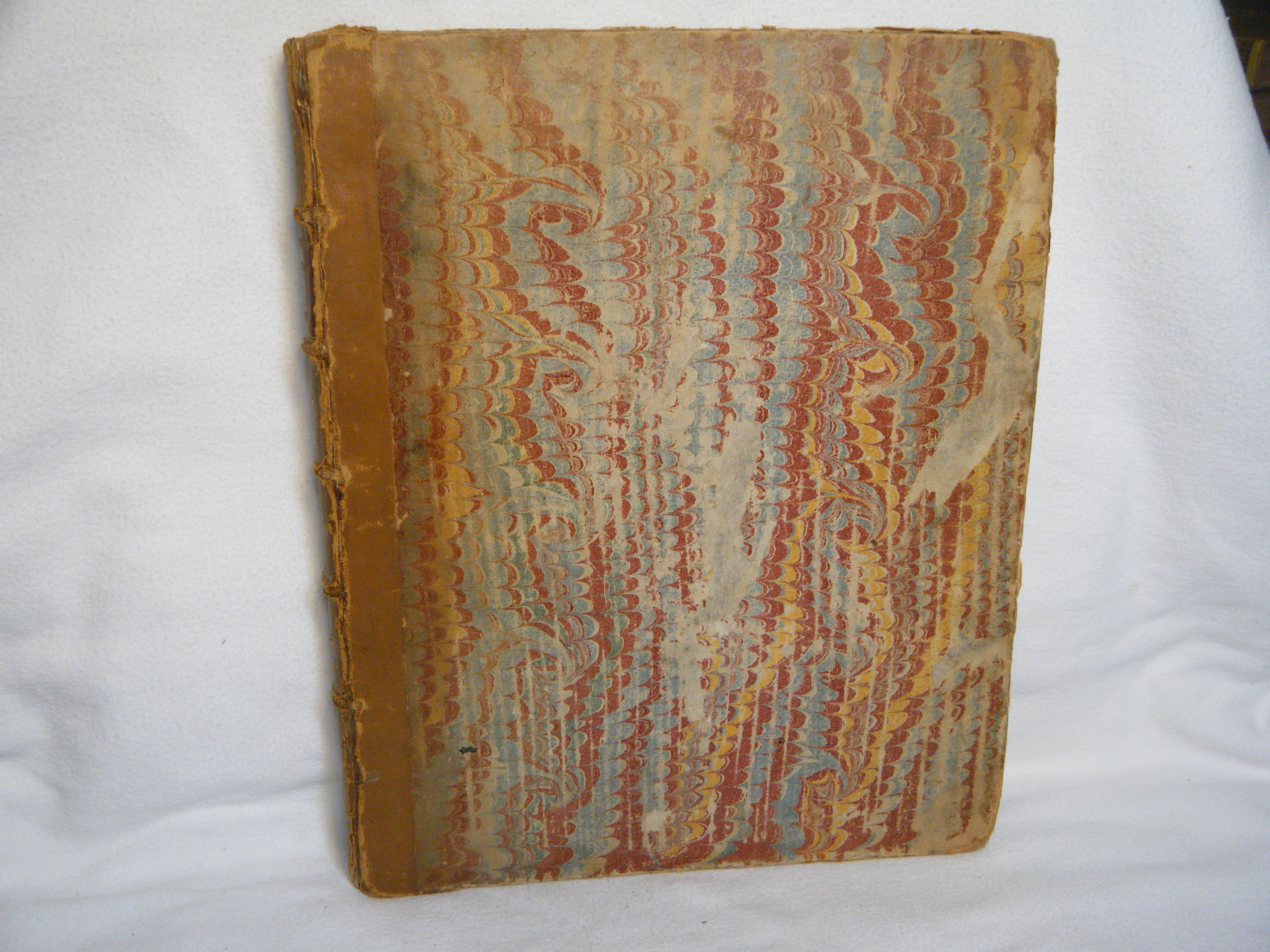Available Copies from Independent Booksellers

Price: US$320.82 + shipping
Description: 4to & oblong folio, (259 & 240mm),xxii,153,[2]p. together with 2 very large folding plates contained in a separate fascicule. A poor copy of the first0named work with the title heavily soiled, and with minor loss from the edges, mounted on modern paper and the results of damp-staining throughout the text block. modern half calf, marbled paper boards; . The folding plates bound in in marbled paper backed grey boards with printed front label, spine worn. 6 later Hogarth printed pasted in at the front and rear. (ESTC N66988) A rare edition of Hogarth's famous work, ESTC locates only 4 copies - in North America - but makes no reference to the fascicule of folding plates, the printed label on which notes: 'Price 15s. with a separate Volume of Letter Press.'
Seller: Barry McKay Rare Books, Appleby-in-Westmorland, CUMBR, United Kingdom

Price: US$799.99 + shipping
Condition: Good
Description: Contemporary quarter leather with marbled boards. Boards rubbed, edges exposed, outer hinges glued. Rear board detached, included. Two multi-folding large engraved plates in nice condition, but the one at rear has some damping to margin. Some mild scattered foxing, some repaired page edges, some marginal damping. Contains: (1) Blank, Foldout plate, title page, preface (A2-xxii) , contents (1) , errata (1) ,1-153, (2) list of prints, foldout plate, (1) blank. ; quarto
Seller: curtis paul books, inc., Northridge, CA, U.S.A.

Price: US$1154.94 + shipping
Condition: Good
Description: 4to. Pp xxii, (ii, contents and errata), 153, 2 page list of prints published by W. Hogarth. 2 multi-folding engraved plates, splitting at the meeting of the folds. Coeval full calf, raised bands, compartments gilt. Well rubbed hinges cracked but holding strongly. Lacks spine title label. Marbled endpapers. Inscription to fly leaf and bookplate to front paste-down endpaper.
Seller: Leakey's Bookshop Ltd., Inverness, United Kingdom

Price: US$1604.08 + shipping
Condition: Very Good
Description: 4to. xxii, [2], 153, [5] pp. Prints published by W. Hogarth, and are to be had at his house in Leicester Fields [154-155] p. Page [156] is blank. The leaf of Figures referr'd to in the book was printed shortly after this copy was distributed to subscribers; an advertisement in the Public Advertiser, 17 December 1753, states: Those gentlemen who subscribed for the above work, and have already received it, are desired to send to the author for an additional leaf, which is intended for the more easy finding such passages in the book, as relate to the figures in the prints. That leaf is untrimmed and loosely inserted at the rear. According to Paulson, p. 220, "The prints were first distributed to subscribers or sold separately around the date given in the publication line" (i.e. about 5 March 1753). The subscription ticket and various advertisements for the work state that the prints are "fit to frame for furniture"; if the prints were so treated, the copy they were intended to accompany will not contain the plates, though they were clearly intended to be issued with the book. Paulson also states: "All the subscribers copies of the book I have seen lack the folded-in plates" (noting one exception, Horace Walpoles copy); he does not indicate how many or which copies he had seen. Both plates here are marked: Designed, Engraved, and Publish'd by Wm. Hogarth, March 5th 1753, according to Act of Parliament. printed on heavy, fine paper and never folded-in. A print, "Columbus breaking the egg," was used as the subscription ticket for the work; either the ticket or a later state of the print, with the subscription information removed and a publication line added (1 December 1753), is found as a frontispiece in some copies, though there is no evidence for the statement by Burke (p. ix) that the later state was "usually bound as a frontispiece". In contemporary calf-backed marbled boards, all original blanks extant. Training first as an engraver, Hogarth became an independent illustrator as early as 1720. In his spare time he studied painting techniques, notably under Sir James Thornhill. By 1730 he established himself as a portrait painter. Yet at the same time Hogarth began creating sets of anecdotal pictures which brilliantly satirized society and its activities. The first such set, A Harlot's Progress (1732), gained for Hogarth a strong and lasting national reputation. During the following decades he both painted and engraved individual works and sets of images which forged the cornerstone for English satirical art. Such great masters as Rowlandson, Gillray, Heath and Cruikshank followed in Hogarth's footsteps.The opening print for Analysis of Beauty has as its central scene a courtyard filled with some of the most famous works of classical sculpture. It is believed to have been inspired by a passage in Socrates' analysis of beauty based upon art objects in the yard of a friend. In Hogarth's 'yard' the great sculpture is intermingled with various, often comic, contemporary art objects. The second print is a ballroom scene with dancers ranging from the elegant to the ungainly; in the lower left corner is a pile of tricorne hats; forming a border around the main image are compartments with diagrams relating to the text. Plate I is the second state with the inscription ET TU BRUTE removed from Quin's pedestal but the marks of some of the letters visible. Plate II is the first state. Centre folds supported to rear and some small edge tears also. Two corners infilled from drawing pin damage, not effecting image area. Read, S.E. Some observations on William Hogarths Analysis of beauty, Huntington library quarterly 5:3 (April 1942), p. 363-364. Burke, J. Prefatory matter to his edition of The analysis of beauty (Oxford, 1955), p. ix-lxii. Paulson, R. Hogarths graphic works, rev. ed. (New Haven and London, 1970), cat. no. 195-196. Brunet III, 250; Lowndes III, 1082. ESTC T2690
Seller: West Grove Books, London, United Kingdom